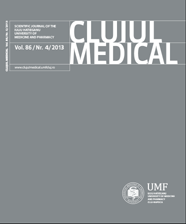Epidemiology Of Self-Reported Drug-Induced Immediate-Type Hypersensitivity Reactions In The Surgical Population: A 5-Year Single-center Survey In A Romanian Allergo-Anaesthesia Center
Keywords:
hypersensitivity, drug allergy, basophil activation testAbstract
Aim: Immediate-type hypersensitivity drug reactions are frequently underreported, epidemiological data being imprecise. The aim of our study was to identify the drugs involved and to describe the clinical characteristics of previous immediate-type hypersensitivity reactions in a large series of Romanian surgical patients, and to establish the concordance between in vivo and in vitro tests.
Methods: Of the 807 surgical patients referred to our outpatient department of allergo-anaesthesia, we retrospectively enrolled 632 patients with previous druginduced hypersensitivity reactions. The allergological work up included a complete allergological history, allergological skin tests and in vitro tests.
Results: The drugs involved were: antibiotics in 68% of our patients (with 83.02% being β-lactams), followed by NSAIDs in 43.28% (50.24% of them being metamizol), general anaesthetics in 9.33%, and local anaesthetics or other drugs, each in 6.32% of the 632 patients. The clinical features reported were urticaria in 63.13%, angioedema in 41.77%, bronchospasm in 15.82%, hypotension in 16.61% and cardiovascular collapse in 21.51% of our patients; 31.80% of the referred patients were confirmed as being positive by at least one diagnostic test. The agreement between in vivo tests and BAT was fair (k=0.35), while between in vivo tests and IgE, the concordance was poor (k=0.12).
Conclusions: The data obtained from the patients referred to our clinic without any filters and restrictions indicates the pattern of drug-induced immediate-type hypersensitivity reactions and the most frequently involved drugs in Romania. At the end of the allergological work-up we confirmed 31.80% of our patients as having druginduced hypesensitivity.
Downloads
Published
How to Cite
Issue
Section
License
The authors are required to transfer the copyright of the published paper to the journal. This is done by agreeing to sign the Copyright Assignment Form. Whenever the case, authors are also required to send permissions to reproduce material (such as illustrations) from the copyright holder.

The papers published in the journal are licensed under a Creative Commons Attribution-NonCommercial-NoDerivatives 4.0 International License.

